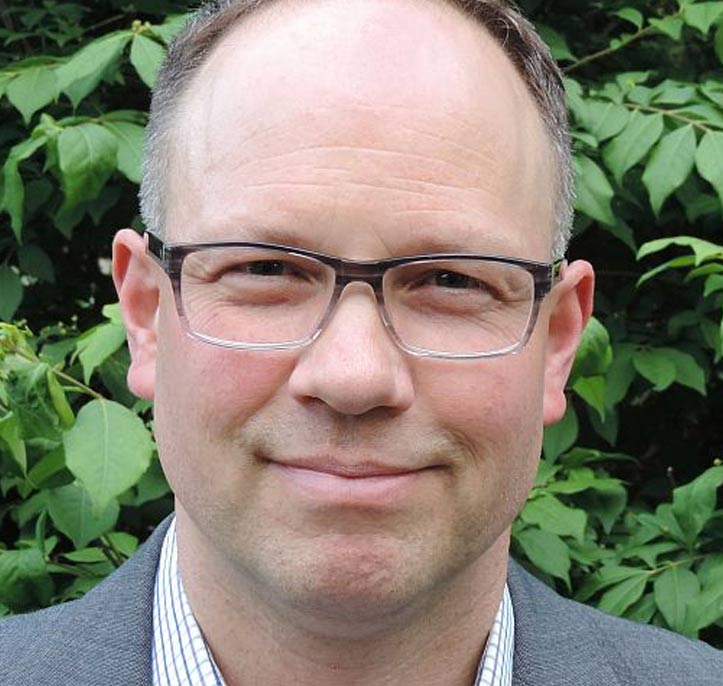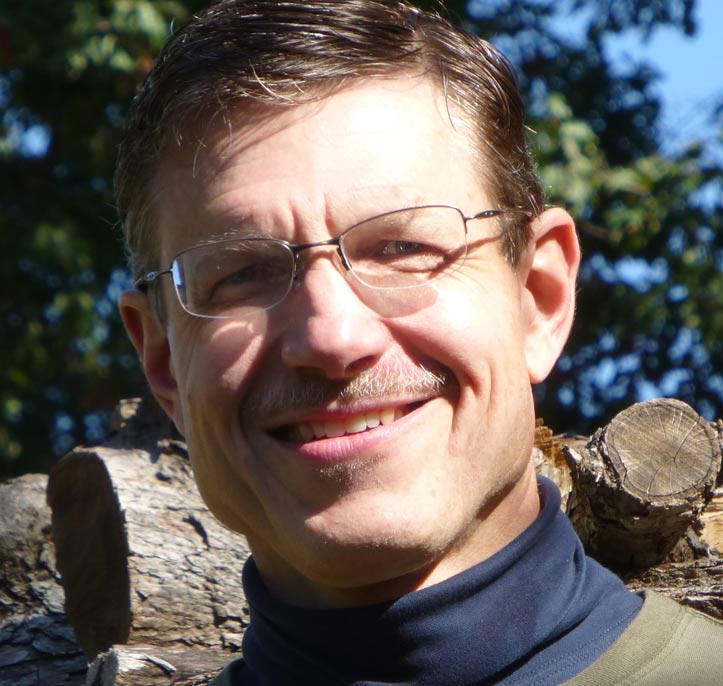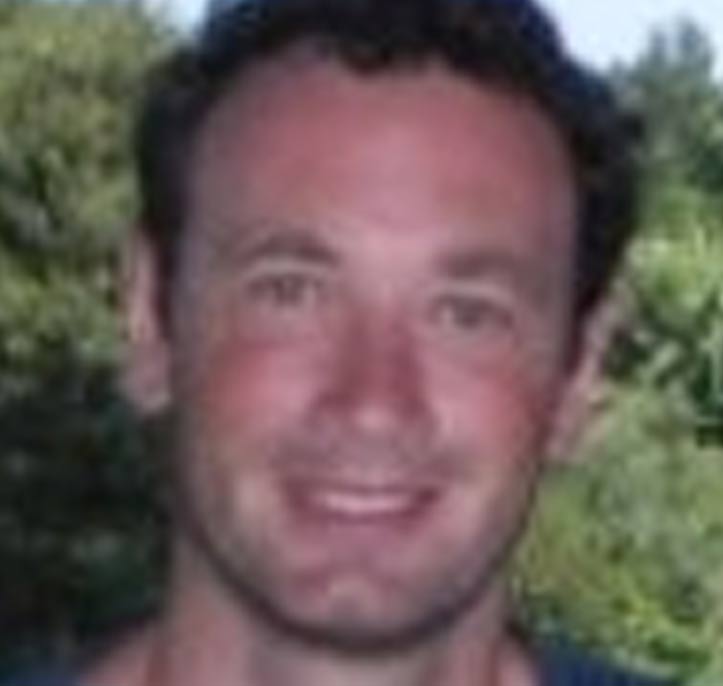2019 SMART Toronto
January 24, 2019
SMART Remediation talks have focused on innovative technologies for remediating contaminated sites, approaches for site characterization, project case studies, regulatory and industry perspectives, and other related topics.

The 24th SMART Remediation conference was held in Toronto on Thursday, January 24th, 2019. Details on the speakers and presentations are provided below.
Speakers

Norman Rankin,
MECP
Communicating Effectively with the MECP
- Bio |
- Abstract
- | Presentation
Norman Rankin
Norman S. Rankin is Counsel with the Ontario Ministry of the Attorney General. Since March 2003, he has served as the Regional Counsel for what is now known as the Ministry of the Environment, Conservation and Parks, Drinking Water and Environmental Compliance Division, Central Region (Toronto, Halton-Peel ,York-Durham and Barrie Districts) where he assists the Director, District Managers, and environmental officers in carrying out their wide ranging abatement duties and policy initiatives. Norm received his B.A. from the University of Western Ontario in 1969, his LL.B. from McGill University Law School in 1973 and was called to the Bar of Ontario in 1975. Norm began his legal career at McCarthys as a corporate commercial lawyer with a broad general practice involving business reorganizations, mergers and acquisitions and financing transactions. In 1988, Norm began to specialize as a full-time environmental solicitor with an emphasis on environmental compliance and preventive measures for businesses, secured lenders, officers and directors. In 1992 he became a member of Miller Thomson’s Environmental Law Services Group and in 2001 Norm joined the Ontario Public Service.
Communicating Effectively with the MECP
This presentation will provide an overview of the structure of the Ministry and offer some of the practical and legal aspects regarding communications with various Ministry departments.

Jacquelyn Stevens,
Willms & Shier Environmental Lawyers LLP
Court Upholds MECP’s EPA No‐Fault Order Requiring Off‐Site Soil Vapour, Groundwater and Surface Water Investigation
- Bio |
- Abstract
- | Presentation
Jacquelyn Stevens
Jacquelyn Stevens has significant expertise representing a wide range of clients in environmental civil litigation, defence of prosecutions by environmental regulators, and on administrative appeals. Jacquie also provides effective advice and solutions for environmental due diligence and compliance, brownfields/contaminated site remediation, and environmental approvals for air, odour, noise and waste. Jacquie appears before the Courts and administrative tribunals, including the Ontario Court of Appeal. Jacquie advises on cross-boundary migration of contamination and remediation options during civil litigation and has significant expertise litigating contamination issues at dry cleaning operations and gas stations. Jacquie defends clients against quasi-criminal environmental prosecutions by regulatory authorities, and appeals regulatory orders and approvals. Jacquie is the President of the Women’s Law Association of Ontario and a member of the CBA, OBA, PDAC and ESAA. In addition to her law degree, Jacquie has a B.Sc. in Earth Sciences from Dalhousie University, a Master of Science in Geology from St. Francis Xavier University, and a Master of Studies in Environmental Law from Vermont Law School. Jacquie is called to the bar in Alberta and Ontario.
Court Upholds MECP’s EPA No‐Fault Order Requiring Off‐Site Soil Vapour, Groundwater and Surface Water Investigation
Environmental consultants and contractors are often called upon to respond to Ministry of the Environment, Conservation and Parks Orders issued to their clients. In issuing Orders, the Ministry must assess the objective of and the statutory authority for each Order. The Ministry frequently issues remedial and preventative orders pursuant to EPA, ss. 17 and 18. The question arises, “To what extent does the Order reflect the environmental harm that the Order is intended to address? And, “Has the Ministry over-stepped its bounds, misapplied the statute, or misunderstood the environmental harm?” With most Orders, the Ministry gets it right. However, occasionally the Ministry, in issuing Orders, may not be quite right. Exceptional circumstances give rise to appeals. Appeals of Orders are prescribed in law. Rights of appeal have very short appeal deadlines. Knowing the rules is essential. In Hamilton Beach Brands Canada, Inc. v Ministry of the Environment and Climate Change, the Orderees challenged the Director’s jurisdiction to require the Orderees to undertake soil vapour, groundwater and surface water investigation at off-site properties. Appeals ensued. Decisions were issued by Ontario’s Environmental Review Tribunal and the Divisional Court. Leave is being sought to the Ontario Court of Appeal. A key question in this case is, “Whether the scope of the Ministry’s Order went beyond what the legislature intended and what the EPA provides? Further, “What is the role of consultants and contractors pre- and post- issuance of a Ministry Order?”

Carl Spensieri,
Berkley Canada
Managing Real Estate (re)Development Risk & Environmental Insurance
- Bio |
- Abstract
- | Presentation
Carl Spensieri
Carl is focused on delivering better outcomes for clients by using his expertise to underwrite complex environmental risk and deliver creative risk transfer solutions. Prior to turning his attention to underwriting, Carl worked as an environmental engineer at a Toronto based environmental consulting company. He then joined a Canadian law firm, working within their environmental law group. Carl’s areas of experience include merger & acquisition due diligence; liability assessment and risk transfer; property transactions; and complex infrastructure projects. Carl holds both a Bachelor and Masters of Applied Sciences and Engineering (Chemical and Environmental Engineering) from the University of Toronto, is a Professional Engineer and is pursuing a law degree from the University of London (UK).
Managing Real Estate (re)Development Risk & Environmental Insurance
An overview of environmental Insurance and the Canadian real estate (re)development marketplace over the past 10 years (i.e., observed losses and trends). In addition, Carl will highlight various urban (re)development risks and explain how insurance can be used to minimize them.

Bithun Sarkar,
Jacobs
“Where is the NAPL” – Understanding NAPL Mobility for Risk Management Decision‐Making
- Bio |
- Abstract
- | Presentation
Bithun Sarkar
Bithun Sarkar is a professional engineer with Jacobs with over 6 years of industry experience in environmental engineering and project management, particularly in the oil and gas industry. He is one of the lead environmental engineers working on the Port Lands Flood Protection and Enabling Infrastructure project managed by Waterfront Toronto. For this project, Bithun manages a diverse range of scopes including environmental site characterization, remedial and risk mitigation design, and earthworks engineering. Prior to joining Jacobs, Bithun worked at Imperial Oil as an Environmental Project Manager, for which he was responsible for managing a portfolio over 100 environmental assessment and remediation projects. Bithun also held a second role at Imperial Oil as a Project Development Advisor, for which he developed and implemented environmental remediation and risk management plans for large-scale oil and gas facilities such as former gas plants. Bithun holds a bachelor’s degree in Engineering Chemistry from Queen’s University, and a master’s degree in Chemical and Environmental Engineering from University of Toronto.
“Where is the NAPL” – Understanding NAPL Mobility for Risk Management Decision‐Making
Background/Objectives: Full-scale remediation of NAPL impacted sites to regulatory standards can often be technically prohibitive, costly, and provides marginal increases in protection to human health and the environment. With the advancement of NAPL investigation techniques, modeling, and mobility understanding, in many cases, NAPL can be managed in place allowing sites to be reused without costly remediation. Such an approach is being evaluated for the Toronto Port Lands Flood Protection and Enabling Infrastructure Project (PLFP) led by Waterfront Toronto. NAPL mobility is an important metric that should be included in the development of remedial and risk management strategies. Unlike many risk-based criteria which represent a defined toxicity and relatively easily measured value, metrics for NAPL mobility remain nebulous. NAPL mobility and stability are best understood using multiple lines of evidence including historical site data such as depth to NAPL, presence of NAPL in wells, spatial plume stability, and site-specific laboratory data such as total petroleum hydrocarbon (TPH) concentrations and NAPL saturation from undisturbed soil cores. This study provides an example of how these multiple lines of evidence can be combined to develop NAPL mobility criteria, which can then be used to manage NAPL in place in different areas of the PLFP site. Approach/Activities: This presentation will demonstrate how existing geological, TPH, and laser-induced fluorescence (LIF) data can be used to provide a relatively high spatial data density for NAPL analysis. Two distinct LIF methods (UVOST and TarGOST) were utilized to distinguish between areas with different NAPL types, which typically have varying degrees of mobility. Due to inconclusive results from a previously completed NAPL transmissivity test, an undisturbed soil core study was conducted for further mobility assessment. NAPL information from existing site data were correlated with results from undisturbed soil core analysis. NAPL saturation data obtained from undisturbed soil cores were used to provide interpretation of NAPL mobility specific to soil and NAPL types. It is important to distinguish between mobile and stable NAPL, as it ultimately affects the selection of risk management measures. In particular, NAPL mobility was explored under typical groundwater gradients (via water drive test), conservative centrifuge testing, and spontaneous imbibition testing. By combining these data sets, NAPL mobility metrics (i.e., concentrations and soil types), above which NAPL may migratewere developed. Results/Lessons Learned: Corollary analysis of undisturbed soil core results to other NAPL site characterization data was important for establishing a relationship between large historical data sets describing the NAPL distribution across the site and where those NAPL distributions may pose potential NAPL mobility risks. The NAPL mobility thresholds defined through this analysis provides a technical basis for remedy selection.

Jim Depa,
St. John-Mittelhauser & Associates
How Do 3D Conceptual Site Models Reduce The Costs of Environmental Remediation?
- Bio |
- Abstract
- | Presentation
Jim Depa
Jim is a geologist at St. John-Mittelhauser and Associates, a small employee-owned environmental consulting firm near Chicago. He is a 2005 graduate from the University of Illinois with a BS in Geology including advanced course work in Geographic Information Science (GIS). Jim has more than 13 years of experience in the environmental consulting field, and specializes in creating 3D conceptual site models and animations in order to assess complex sites and design more cost-effective remediation systems. Several of Jim’s 3D models have been published in the textbook, “Urban Watersheds – Geology, Contamination, and Sustainable Development”. In February 2018, Jim served as an expert witness and provided testimony as a Data Visualization and Animation Expert for his role in creating several 3D models and animations that will be used as trial exhibits in an upcoming litigation. Jim has given platform presentations at the 2017 Florida Remediation Conference, the 2018 Battelle Chlorinated Conference, and the upcoming 2018 Florida Remediation Conference, to be held in Orlando, Florida on December 5-6, 2018. The models and animations to be presented at the 2019 SMART Remediation Conference directly resulted in a cost savings of over 1.1 million dollars for the client.
How Do 3D Conceptual Site Models Reduce The Costs of Environmental Remediation?
The objective of the project was to create a 3D conceptual site model depicting subsurface trichloroethene (TCE) contamination at a former auto parts manufacturer, and explain how the model reduced the costs of both the subsurface site investigations and the design of the remediation system. To create the 3D model, both soil analytical results and geologic data from boring logs were statistically modeled and visualized using C-Tech’s Earth Volumetric Studio. The model was used to communicate data about the subsurface contamination to the client, remediation contractors, and governing agency. The 3D conceptual site model was responsible for reducing the costs of the remediation by more than $1.1MM. Specifically, the 3D model was able to: – Quickly identify data gaps from previous soil investigations; – Help to select Electrical Resistive Heating (ERH) as the most cost-effective remedial technology; – Optimize the design of the ERH remediation system by reducing the size of the treatment volume by nearly 40%; and – Effectively communicate the results of the soil investigations, design of the ERH system, and confirmatory sampling plan to the governing agency. In addition, the 3D conceptual site model was produced into a several short animations and uploaded to YouTube. The animations provide a way for anyone with an internet connection to better understand how and why environmental investigations are performed, how geology effects subsurface contaminant migration, and how ERH remediation operates. Soil Contamination from a TCE Spill (2:04): https://www.youtube.com/watch?v=_XMLq81KsA0

Mohamedarif M. Jagani,
AiMS Environmental
Vapour Intrusion: Diffusion - the Often Overlooked Pathway
- Bio |
- Abstract
- | Presentation
Mohamedarif M. Jagani
Mohamed Jagani is a principal and founding partner of AiMS Environmental, a firm started in 1993. He is a engineering graduate of the University of Toledo, Ohio, and the University of Nairobi, Kenya with Master of Science Degrees in Civil Engineering. He became a Professional Engineer in 1990 and is designated as a Qualified Person with the Ministry of the Environment under Ontario Regulation 153/04 for conducting environmental site assessments (ESAs). Mohamed has over 30 years of experience, specializing in geo-environmental engineering, and specializing in due diligence environmental studies for property purchase, sale and financing transactions, including Brownfields and contaminated real estate. Mohamed has conducted and managed over 1,200 environmental projects including Phase I and II ESAs; geo-environmental subsurface investigations; site characterizations, decommissioning and remediation. He has undertaken numerous indoor air monitoring and design-build projects for vapour intrusion and mitigation systems, including those using spray-applied or prefabricated sub-slab membrane systems in conjunction with venting systems. Mohamed will speak to you about an interesting project involving vapour intrusion by the diffusion pathway.
Vapour Intrusion: Diffusion - the Often Overlooked Pathway
Intrusion of volatile contaminant vapour into buildings has been closely studied and regulated more over the past two decades as the science of vapour intrusion has become more understood and the allowable levels of airborne contaminants have become more restricted. Mitigation methods include engineered vapour barrier membranes in conjunction with a venting system. In this presentation, we share the experience of a spray applied membrane our Client commissioned during construction of a commercial slab-on-grade building on a contaminated property in Guelph that had undergone a risk assessment and was approved for redevelopment subject to installation of the vapour barrier as one of the risk management measures. The site hosted a former electronic circuit board manufacturer who used trichloroethylene in their cleaning process, which had resulted in groundwater contamination by TCE and its degradation compounds. One of the assumptions in using vapour barriers is that the barriers are largely impermeable to the contaminant vapour or have negligible gas permeance. While this may be true, our experience at a long-term project over the last five years suggests that measurable amounts of the contaminant can make it past the barrier regardless of how air-tight the barrier is made and installed. Even after ensuring installation of the barrier has been done correctly with all quality control checks such as visual inspections, coupon samples collected for verifying the thickness of the membrane meets or exceeds specifications, one still cannot completely guarantee that no vapour intrusion is occurring. We found this out the hard way when our Client imposed some special requirements for monitoring of the sub-slab air quality. Laboratory reports showed the sub-slab air samples collected from the air space above the membrane consistently had levels of trichloroethylene in excess of the Ministry of the Environment draft health-based indoor air quality criteria. The contractor performing the installation was understandably perplexed as the Client and their own consultant suggested there might be a breach in the membrane. We performed some calculations which supported the theory that diffusion was playing a role in allowing small amounts of the contaminant vapour making it past the vapour barrier. The presentation will demonstrate the findings of this project together with the math behind the diffusion pathway as the likely explanation for the observed contaminant vapour levels. It will also provide insight into whether the diffusion pathway should be a cause for concern and should be considered at other sites.

Phil Dennis,
SiREM
Advances in Anaerobic Bioremediation of Benzene
- Bio |
- Abstract
- | Presentation
Phil Dennis
Phil Dennis has over 25 years of experience working in the fields of molecular biology, microbiology and environmental remediation with a focus on microorganisms that help to clean up our groundwater. Phil holds a Masters of Applied Science in Civil Engineering from the University of Toronto and an Honors B.Sc. in Molecular Biology and Genetics from the University of Guelph. Phil is a founding member of SiREM, an industry leader in bioaugmentation and remediation testing, where as a Senior Manager he focuses on research and development, and management of molecular genetic testing services.
Advances in Anaerobic Bioremediation of Benzene
Widespread use of petroleum products has resulted in contamination with BTEX compounds at numerous sites. BTEX compounds, which are the most soluble of petroleum hydrocarbons, can readily biodegrade under aerobic conditions, however where anaerobic conditions prevail, natural attenuation of BTEX has also been observed. Most often, under anaerobic conditions, benzene is observed to persist, due to its recalcitrance to degradation and can become a regulatory driver for remediation. Several benzene degrading cultures have been identified including a methanogenic benzene enrichment culture (DGG-B), developed at the University of Toronto. DGG-B transforms benzene and produces methane and the key benzene degrader, Deltaproteobacteria ORM-2, has been identified. This culture also degrades benzene under sulfate reducing conditions. Recent research efforts have been undertaken to determine 1) whether bioaugmentation with the DGG-B culture is an effective remedy for benzene contaminated sites; 2) if the presence of benzene degrading biomarkers can be correlated to in situ biodegradation activity and 3) if scale up of the culture to volumes sufficient for field pilot testing application is feasible. Numerous anaerobic treatability studies have been conducted using site materials impacted with petroleum hydrocarbons. The time frame for these treatability studies ranged from 8 to 14 months. Degradation of BTEX was monitored with and without DGG-B bioaugmentation and under various electron acceptor conditions. The results to date indicate that bioaugmentation with the DGG-B culture was able to accelerate benzene degradation under methanogenic or sulfate-reducing conditions, while in one case, no benzene degradation was observed despite bioaugmentation. Results from ongoing treatability studies will be presented to provide insights into the performance of the DGG-B bioaugmentation culture at a range of petroleum hydrocarbon contaminated sites, as well as into the correlation between the presence of benzene degradation molecular biomarkers and in situ biodegradation.

John Valkenburg,
PeroxyChem
Evaluation of ISCR PRB Longevity under High Sulfate and High Flux
- Bio |
- Abstract
- | Presentation
John Valkenburg
John has more than 30 years of industry experience, including 5 years as an environmental chemist and 16 years in environmental consulting. He is a professional engineer (Michigan), has been with PeroxyChem (formerly Adventus and then FMC) for the past 12 years, and is a University of Illinois graduate (BS in Dietetics and MS in Environmental Engineering. John and his wife enjoy their 2-1/2 horses, dog, and two cats.
Evaluation of ISCR PRB Longevity under High Sulfate and High Flux
Background/Objective. Historical grain storage facility fumigation operations resulted in groundwater Carbon Tetrachloride (CT) impacts in a small Kansas farming community. High site groundwater flow velocity (estimated at ~700 ft year) has resulted in the CT plume extending approximately 2,500 feet downgradient where it discharges into a small creek; the highest concentrations of CT (approximately 1,500 ug/L) are located near the source area. To limit further plume migration, a Permeable Reactive Barrier (PRB) was installed across the plume width to passively treat CT. The PRB was constructed by injecting EHC® slurry in to a line of direct push injection points. EHC is composed of slow-release plant-derived organic carbon plus micro-scale ZVI particles. Inflowing groundwater is sulfate rich (~120 mg/L), potentially affecting substrate consumption rates and treatment zone reactive life. This presentation reviews geochemical parameter response and CT removal rates over time downgradient of the PRB and compares them with theoretical calculations on ZVI consumption rates using site specific data. These calculations are then discussed relative to the > 10 year PRB longevity and apparent mechanisms for the extended life. Approach/Activities. 48,000 lbs of EHC was injected into an area measuring approximately 270 ft long x 10 ft wide x 9 ft thick on average. The PRB was installed along a road and extended across the width of the plume to limit further plume migration. PRB effectiveness is measured at two compliance wells located 70 and 140 ft downgradient from the PRB. Monitoring is performed on a bi-yearly basis and includes CVOCs and geochemical parameters. Total Organic Carbon (TOC) is monitored as an EHC reagent indicator while ORP, Dissolved Oxygen (DO), nitrate and sulfate are monitored to assess redox conditions in the downgradient zone. Direct measurements of iron have not been performed, but iron consumption rates have been estimated based on inflowing concentrations of terminal electron acceptors. Results/Lessons Learned. CT removal rates peaked 16 months after installation at >99 percent removal. Two years after installation these rates decreased slightly to approximately 95 percent removal and have stabilized around that level for over ten years continuously supporting inflowing groundwater treatment. A significant increase in TOC was measured 70 ft downgradient from the PRB during the first two years. Since then, TOC levels have returned closer to background levels, suggesting that the more readily degradable carbon component (cellulose) had been consumed. During this initial phase redox conditions also reached their lowest point concurrently with significant reductions in inflowing nitrate and sulfate. After TOC levels returned closer to background, sulfate levels also moved closer to inflowing concentrations while ORP remained significantly below background. Theoretical ZVI consumption calculations suggest the ZVI may be consumed after 2.7 years if reacting Stoichiometrically with inflowing sulfate. However, geochemical data suggest that ZVI by itself is not supporting significant sulfate reduction. The probable explanation for the long PRB reactive life is the formation of an iron sulfide mineral based reactive zone created downgradient of the PRB during the initial sulfate reduction phase and since acting as an electron reservoir. This zone may also be continuously rejuvenated by low levels of TOC in inflowing groundwater (~2 mg/L) and from the hydrogen produced from ongoing ZVI corrosion.

Taras (Terry) Obal,
Bureau Veritas
PFAS Replacement Compounds: “The Next Generation”
- Bio |
- Abstract
- | Presentation
Taras (Terry) Obal
Dr. Terry Obal is Chief Science Advisor at Bureau Veritas Laboratories. Terry’s mandate is to ensure that good science and its value are fully available to our customers, regulators and the public by providing technical representation, consultative support and expert opinions for Bureau Veritas clients. Dr. Obal has been integral in the development and commercialization of robust, reliable and defensible methods for the determination of per-and polyfluorinated alkyl substances (PFAS). He is frequently called upon by key environmental stakeholders in the United States and Canada to provide scientific input and expertise on PFAS. Terry has over 30 years of experience in analytical chemistry, laboratory management and environmental chemical consulting. He is currently: Chair of the Board of Directors of the Ontario Environmental Industry Association (ONEIA); Vice-Chair of the Federation of Canada’s Professional Chemists (FCPC); and is an Ontario Chartered Chemist (C.Chem.) through the Association of the Chemical Profession of Ontario (ACPO).
PFAS Replacement Compounds: “The Next Generation”
Industries in the United States have phased out production of PFOA and PFOS because of potential health risks to humans. As global production of PFOS and PFOA is eliminated, manufacturers have been and continue developing PFAS replacement technologies to reformulate or substitute longer chain PFAS (e.g. PFOS and PFOA) with shorter-chain perfluoroalkyl or polyfluorinated substances. These processes result in: fluorotelomer alcohols (FTOH); perfluorobutane sulfonyl fluoride (PBSF)-based derivatives (e.g., perfluorobutane sulfonate (PFBS) as a substitute for PFOS); and polyfluoroethers (e.g. GenX, ADONA and F53B used in the manufacture of fluoropolymers) among others. While there is a substantial body of knowledge for managing risk from PFOS and PFOA, much less is known about replacement PFAS. Although published toxicological data is limited, studies are suggesting that some of the lower molecular weight PFAS replacement compounds may be more hazardous than their long-chain predecessors. Information on the type and extent of environmental contamination by replacement PFAS is also limited, as most are currently not reported as part of the routine suite of PFAS commonly analysed by commercial analytical laboratories. Three key PFAS replacements currently being studied are commonly referred to as GenX, ADONA and F53B. PFAS rreplacement chemicals like these tend to have fewer carbon atoms in the chain, but have many similar physical and chemical properties as their predecessors PFOS and PFOA (e.g. they repel oil and water). Because of an increased interest in PFAS replacement compounds and the potential for their regulation in some jurisdictions, Maxxam has validated methods for the determination of GenX, ADONA and F53B by isotope dilution liquid chromatography coupled with tandem mass spectrometry. This presentation will describe: the history and environmental impact of these compounds; required sample collection protocols; analytical performance considerations; and site remediation challenges.

Daniel Bouchard,
Sanexen
What Additional Value Can Compound Specific Isotope Analysis (CSIA) Bring to the Assessment of Organic Contaminants in Groundwater?
- Bio |
- Abstract
- | Presentation
Daniel Bouchard
Daniel Bouchard holds Bachelor’s and Master’s degrees in soil sciences (Université Laval), and a Ph.D. in hydrogeology (University of Neuchâtel, Switzerland). Currently, Daniel is an expertise manager (R&D – Engineering Department) with Sanexen Environmental Services Inc., and an external Scientific Collaborator with the University of Neuchâtel (Switzerland). With Sanexen, he intervenes in projects that specifically require a thorough characterization of the contaminants to better understand their origin, behavior and environmental fate. With 15 years’ experience with stable isotopes, Daniel has specialized in the application of stable isotope analysis on contaminated sites to better understand the origin and fate of contaminants in the environment, to characterize gas phase contaminants (soil air, indoor air in buildings), and evaluate the effectiveness of in situ remediation treatments.
What Additional Value Can Compound Specific Isotope Analysis (CSIA) Bring to the Assessment of Organic Contaminants in Groundwater?
Over the last three decades, compound-specific isotope analysis (CSIA) has evolved from the state of laboratory studies to a recognized, highly-sensitive field assessment tool. For this reason, the tool has been deployed on numerous contaminated sites to gain key information on released organic compounds (such as petroleum hydrocarbons and chlorinated solvents) that traditional concentration measurements are unable to reveal. For instance, CSIA has proven its reliability and robustness in demonstrating the biological destruction of organic compounds in groundwater, thus becoming an indicated tool for use in the framework of a Monitored Natural Attenuation program. CSIA greatly enhances the quality of information derived from the dataset collected over time, strengthens the conclusions drawn on the fate of organic contaminants in groundwater, and reinforces the Regulator’s decision to approve on-site application of the natural attenuation remedial strategy. Furthermore, the tool has been used to differentiate sources of the same contaminant present in the subsurface for forensic purposes, or to better understand source architecture on complex sites having the potential for multiple release episodes. More recently, the application of the tool has reached another milestone, when it was applied in the framework of in situ remediation treatments to assess whether the intended contaminant mass reduction was initiated as anticipated. More specifically, CSIA was proven reliable in determining whether the contaminant mass reduction observed was attributed to dilution or destruction, or which co-occurring physical, chemical or biological process was the dominant mass-reduction process. In such cases, application of CSIA supports field practitioner’s decision to modify the treatment in real time, which leads to cost-effective remediation treatments. This talk aims to briefly explain the fundamentals of the CSIA method, followed by examples of field applications.